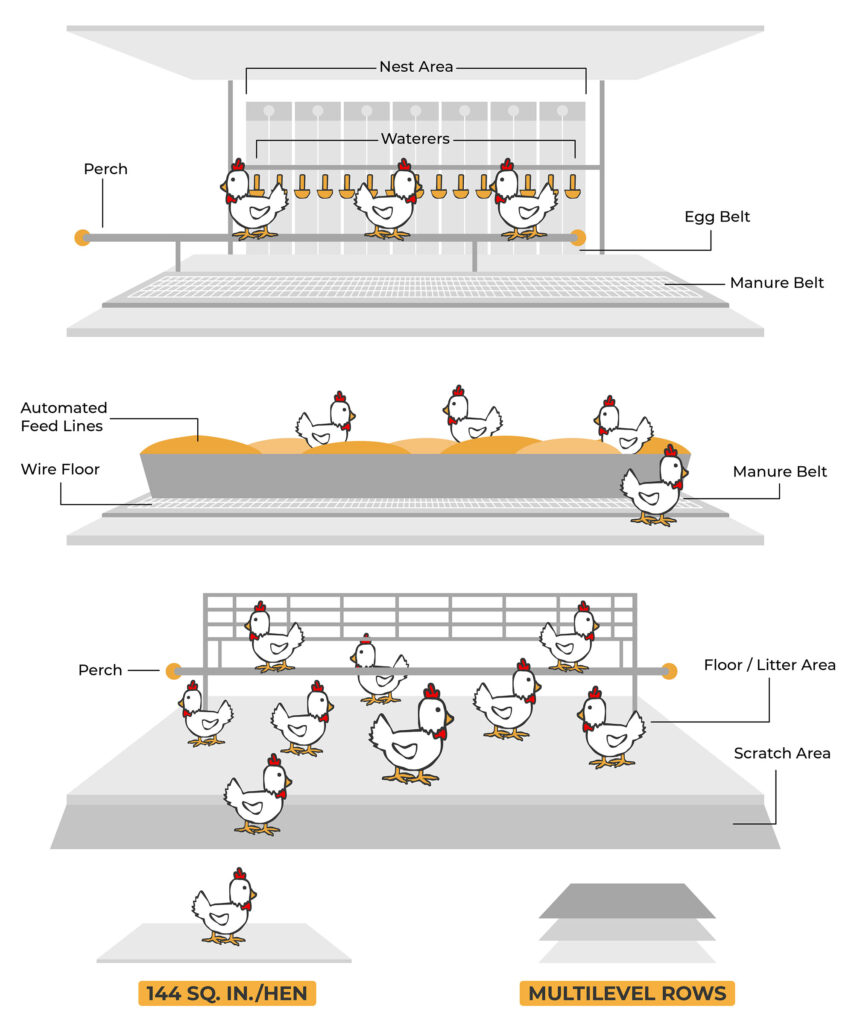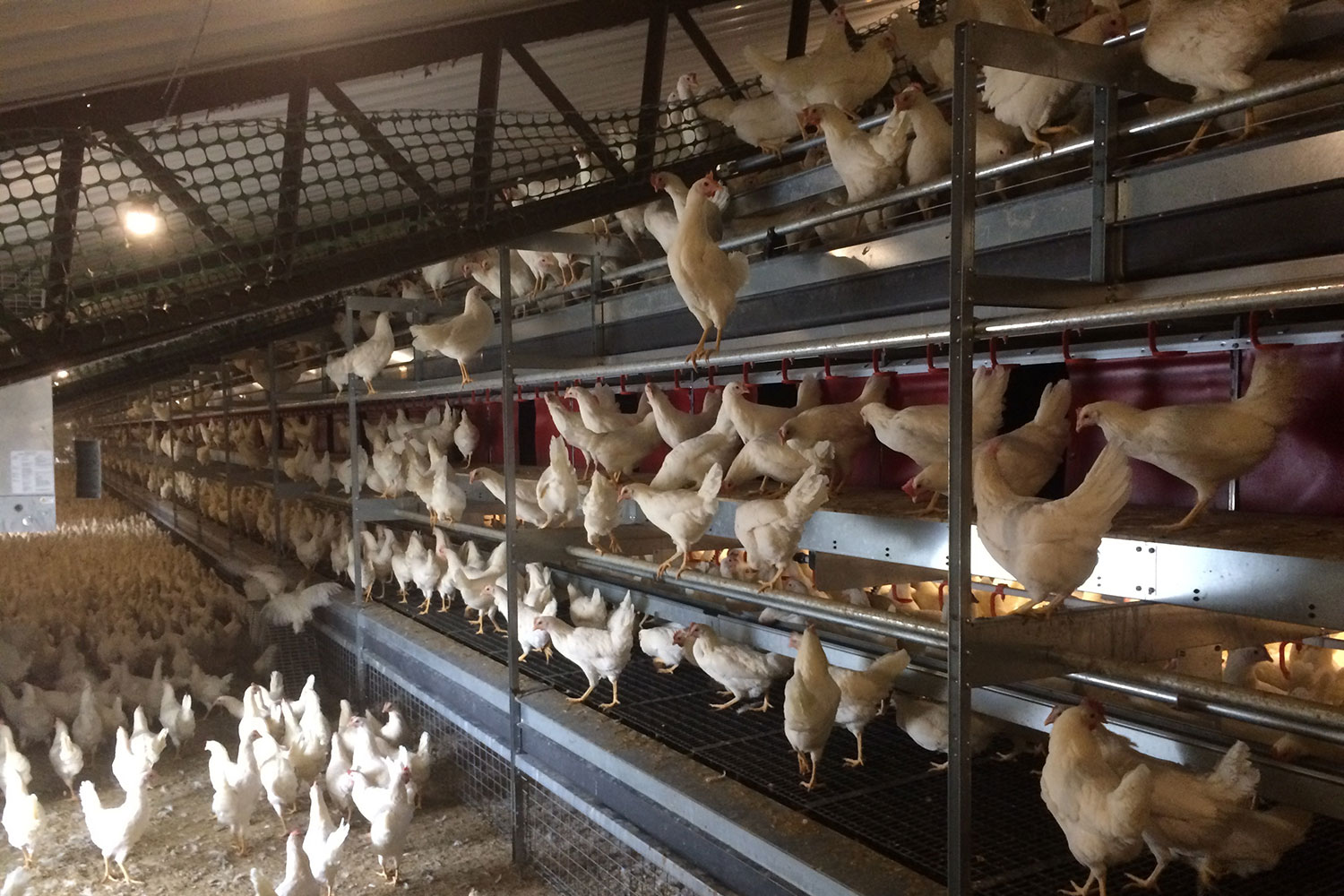Cage-free hen housing is regulated by the USDA. All cage-free barns have scratch areas, perches, and nests that allow hens to behave more naturally, but the term “cage-free” doesn’t mean that the hens are allowed to run all around the farm. Hens in cage-free environments are kept inside barns where they can be protected from predators and harsh weather. They move around freely with hundreds—often thousands—of other hens that all have unlimited access to food and water. Cage-free housing is more costly for farmers than conventional housing because, among other things, collecting the eggs takes more work and the hens are more prone to injury from pecking each other. (Maybe you’ve heard of “the pecking order”? It’s real.)23,24 These added costs for the farmer are reflected in the higher price of cage-free eggs.

- Learn more about cage-free eggs
-
Several states have either passed laws or have laws pending that will require all egg-laying hens to be housed in cage-free environments. Ten states have passed cage-free laws or regulations, usually requiring a minimum of 1 square foot of floor space per hen excluding space allocated for nesting boxes, as well as mandating the sale of only cage-free eggs and egg products in their states.28 California, Massachusetts, Nevada, Washington, and Oregon have already enacted these laws. Arizona, Colorado, Michigan, and Utah will enact their laws on January 1, 2025, and Rhode Island enacts its law on January 1, 2026.

